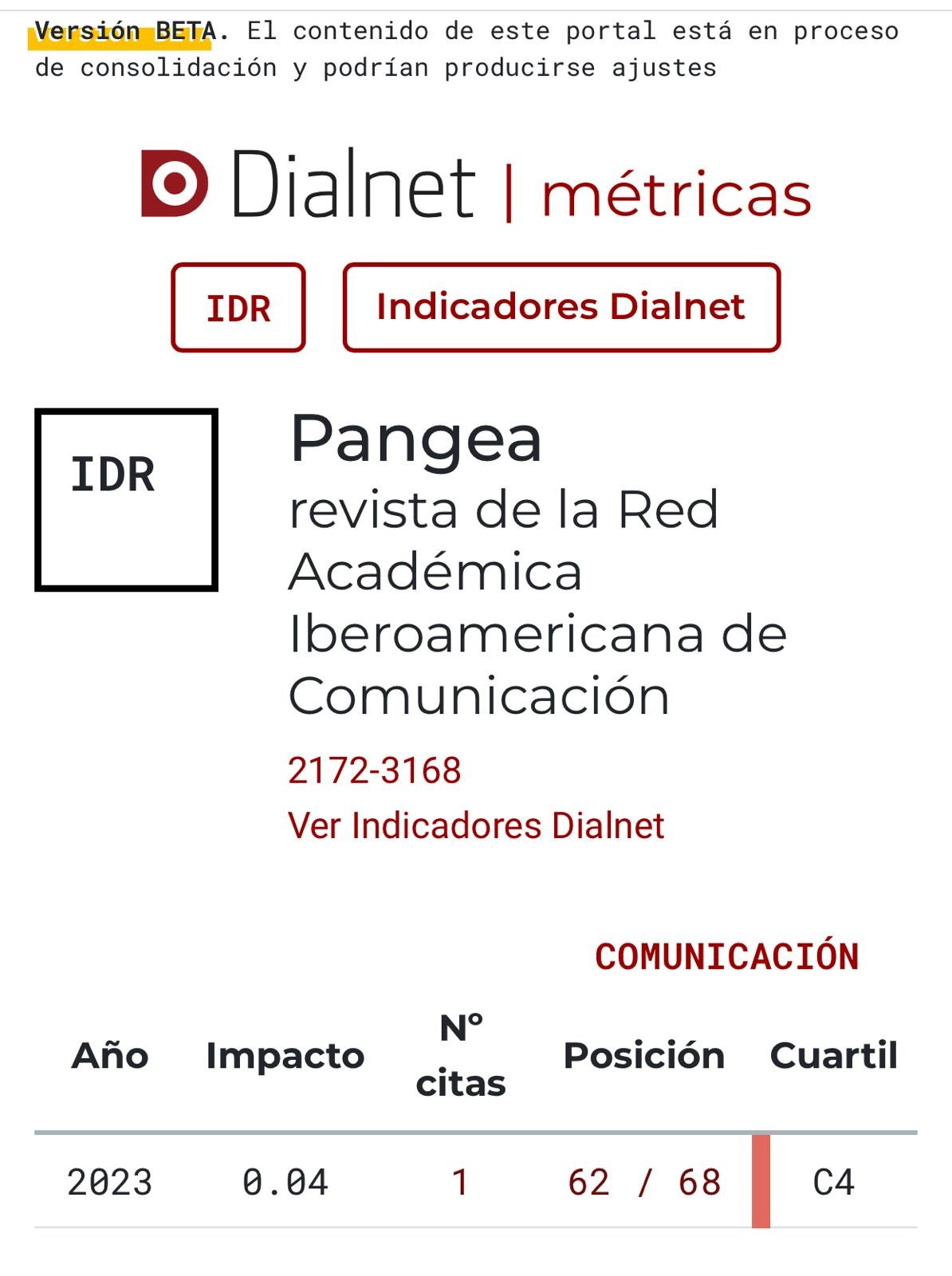Informative treatment and electoral coverage in Querétaro: A look at the 2015 state election
DOI:
https://doi.org/10.52203/pangea.v8i1.104Keywords:
Speech, Electoral Alternation, Public SphereAbstract
The state of Querétaro has three electoral alternations (1997, 2009, 2015) which could show abroad a political plurality and electoral maturity. Based on the above, it can be argued that contradictory political practices prevail in the press and, in spaces for deliberation, show continuities typical of the authoritarian political regime. Beyond the new regulatory frameworks in electronic media, in the daily press the agreements and advertising agreements emphasized in electoral processes continue.
The present work has the purpose of showing an approach to the informative coverage during the electoral process of 2015 in the state of Querétaro. Based on the speeches presented in the daily press of the state capital, it is intended to put into perspective how the public sphere is configured in a context of electoral alternation.
References
BERKOWITZ, Dan (ed.) (1997) Social meanings of news. A text reader. California, USA, SAGE.
CHALABY, Jean, K. (1998) Political communication in presidencial regimes in non-consolidated democracies, en Gazette, Vol. 60 n. 5
CRICK, Bernard (2002) Democracy. A very short introduction. Oxford, UK: OUP
CURRAN, James (et. al) (2009) Media System, Public Knowledge and Democracy. European journal of communication Vol 24(1): 5–26. SAGE Publications.
DALH, Robert (1993) La democracia y sus críticos, Barcelona: Paidos
_____________ (1989) La Poliarquía. Participación y oposición. Madrid: Tecnos.
DÍAZ, Ana (2002) Democratización y Alternancia. Encuesta de actitudes y orientaciones políticas de los ciudadanos en Querétaro, México: UAQ, UDG, IEQ
DUQUETTE, Michel (1999) Building new democracies. Toronto. University of Toronto Press
DEMERS, Francois & Lavigne, A. (2007). La comunicación pública: una prioridad contemporánea de investigación. En Comunicación y Sociedad, No. 7, nueva época.
FAIRCLOUGH, Norman (1995) Media discourse. London, UK. Hodder Arnold.
FINLAYSON, James Gordon (2005) Habermas. A very short introduction. Oxford, UK: OUP
FREEDEN, Michael (1996) Ideologies and political theory: a conceptual aproach. Oxford, UK: OUP
GRAMSCI, Antonio (1971) Cuadernos de la Cárcel. México: ERA
CHAM Gerardo (2003) Teoría del Discurso (estrategias periodísticias) Guadalajara: UDG
HABERMAS, J. (1981) Historia y crítica de la opinión pública. La transformación estructural de la vida pública, México: Gustavo Gili
______________ (1996) Between facts and norms. Boston: MIT
______________ (2006) Political Communication in Media Society: does Democracy still enjoy an epistemic dimension? The impact of normative theory on empirical research.
KRIPPENDORF, Klaus (1997) Metodología del análisis de Contenido. Teoría y Práctica. Barcelona. Paidos
LAWSON, Chappel H. (2002) Building the fourth estate. Democratization and the rise of a free press in México. California, US: University of Californa Press.
LEÓN y Ramírez, Juan Carlos (2004) La construcción de espacios púbicos en la democracia. México: UAEM
LÖFFELHOLZ, Martin and david Weaver (eds.) Global journalism research. Oxford, UK. Blackwell publishing.
MIDDELEBROOK, KEVIN (2004) Dilemmas of political change in Mexico. London, UK: Institute of Latin American Studies
MILLER David (2003) Political philosophy. A very short introduction. Oxford, UK: OUP
MINOGUE Kenneth (1995) Politics. A very short introduction. Oxford, UK: OUP
MORLINO, Leonardo (2005) Democracias y democratizaciones, México: Cepcom.
NEGRINE Ralph y James Stanyer (eds) (2007) The political communication reader. Oxford, UK: Routledge.
NORRIS, Pippa (2000) The news media and democracy & a virtuos circle? en ibid. A virtuos circle. Political Communications in Post Industrial Societies Cambridge University Press. Cambridge
O’DONNELL, Guillermo, Schmitter, Philippe (1994) Transiciones desde un gobierno autoritario, Barcelona: Paidos
SINGER, Jane B. (2009) Separate Spaces. Discourse about the 2007 Scotish elections on a national newspaper web site. International Journal of press/politics V.14 n. 4 October 2009
THOMPSON, John B. (1993) Ideología y Cultura Moderna. México: UAM
________ (1998) Los media y la modernidad: una teoría de los medios de comunicación. Barcelona: Paidos.
TORFING, Jacob (1999) New Theories of Discourse: Laclau, Mouffe and Zizek. Oxford UK: Blackwell Publishers.
TUCHMAN, G (1972) Objectivity as strategic ritual: An examination of newsman notions of objectivity, American Journal of sociology Chicago: The University of Chicago Press
___________ (1978) Making news: A study in the construction of reality. New York: The Free press.
VAN DIJK, Teun (comp.) (2000) El discurso como estructura y proceso. Estudios sobre el discurso. Una introducción multidisciplinaria. Barcelona: Gedisa
VON SCHOMBERG, Rene and Kenneth Baynes (eds) (2002) Discourse and democracy. Seáis on Habermas’s between facts and norms. New York, USA. SUNY.
WETHERELL, M, Taylor, S, Yates S. (2001) Discourse as data. A guide for analysis. London, UK. Sage publications; The Open University.
WHITEHEAD, Laurence (1997) The vexed issue of the meaning of “democracy” in Journal of political ideologies. Volume 2 number 2 june 1997. Oxford, UK: Carfax
_________(2003) Democratization Theory and Practice. Oxford, UK: OUP.
WOLTON Dominique. (1998). La comunicación política: construcción de un modelo. En Ferry et al, El nuevo espacio público. Barcelona: Gedisa.
Downloads
Published
Issue
Section
License
Copyright (c) 2017 Gabriel Alfonso Corral-Velazquez

This work is licensed under a Creative Commons Attribution-NonCommercial-NoDerivatives 4.0 International License.
https://creativecommons.org/licenses/by-nc-nd/4.0/deed.es





